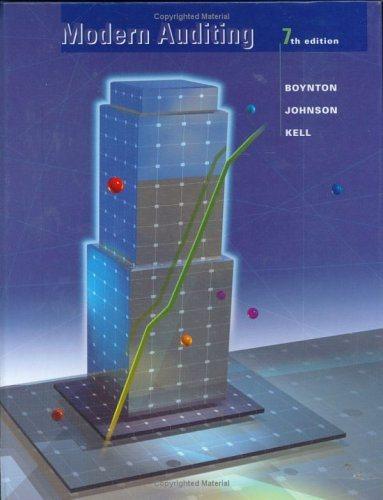Question
Michael Masterson has brought you a set of financial statements of a company that he is considering investing in as a long-term investment. He is
Michael Masterson has brought you a set of financial statements of a company that he is considering investing in as a long-term investment. He is asking for your help in determining if the company would be a good investment for him.
Using the attached financial statements, you need to create a vertical analysis as percentage of Total Assets for the Balance Sheet and as a percentage of Sales for the Income Statement, as well as a horizontal analysis of the Balance Sheet and Income Statement. Complete this for both years. In addition to the vertical and horizontal analysis, you need to calculate the following ratios:
Liquidity & Efficiency:
Current Ratio
Acid-Test Ratio
Receivables Turnover & Days Sales Uncollected
Inventory Turnover & Days sales in Inventory
Solvency:
Debt Ratio
Equity Ratio
Debt to Equity Ratio
Profitability:
Profit Margin Ratio
Gross Margin Ratio
Return on Total Assets (ROA)
Return on Equity (ROE)
This information then needs to be incorporated into a written memo to Michael Masterson. Be sure to include the following information in your memo.
Introductory Paragraph This paragraph will be an introduction to your analysis. In this paragraph, explain the importance of analyzing financial statements before investing in a company. Be sure to answer the following questions in your introduction:
1. What is the purpose of creating a vertical analysis and why is it useful in analyzing a potential investment?
2. What is the purpose of creating a horizontal analysis and why is it useful in analyzing a potential investment?
3. Overall, what do each of the three sections of ratios (Profitability, Liquidity & Solvency) tell a person about a company? Financial Analysis Section In this section, you will share the results of your calculations and then explain what those results mean in detail. You will need a subsection for the completed vertical analysis and a subsection for the completed horizontal analysis. Within these sections,
you will include specifics regarding your calculations and what those calculations mean for the company. You will also need to include a sub-section for each of the three types of ratios. Within each of the subsections, incorporate the ratios in a Table format and then explain what your calculations mean. While you are allowed to include the definition of the ratios in this section, you must specifically explain what your calculation of the ratio means and analyze the data that you have computed.
The subsections of the Financial Analysis Section must be in this order:
1. Vertical Analysis
2. Horizontal Analysis
3. Liquidity and Efficiency Financial Ratios
4. Solvency Financial Ratios
5. Profitability Financial Ratios

Step by Step Solution
There are 3 Steps involved in it
Step: 1

Get Instant Access to Expert-Tailored Solutions
See step-by-step solutions with expert insights and AI powered tools for academic success
Step: 2

Step: 3

Ace Your Homework with AI
Get the answers you need in no time with our AI-driven, step-by-step assistance
Get Started


